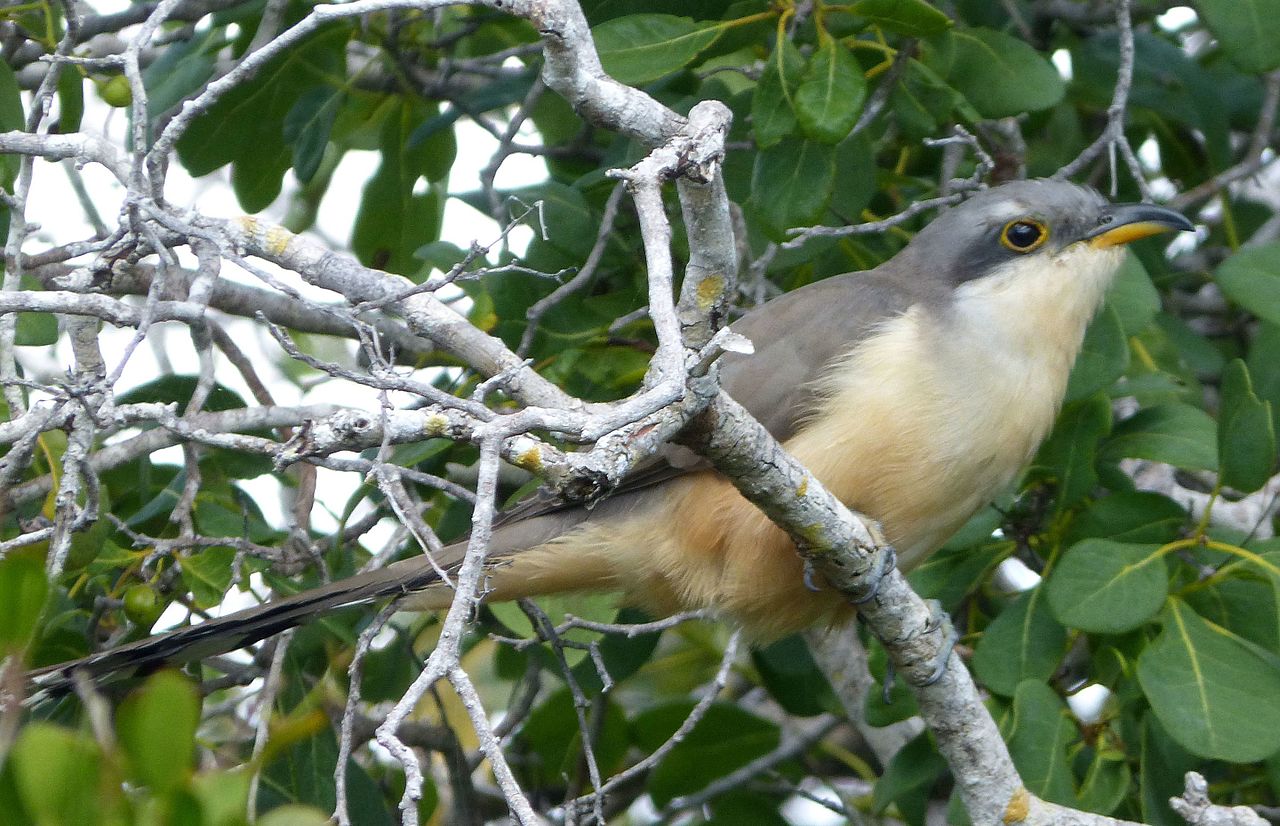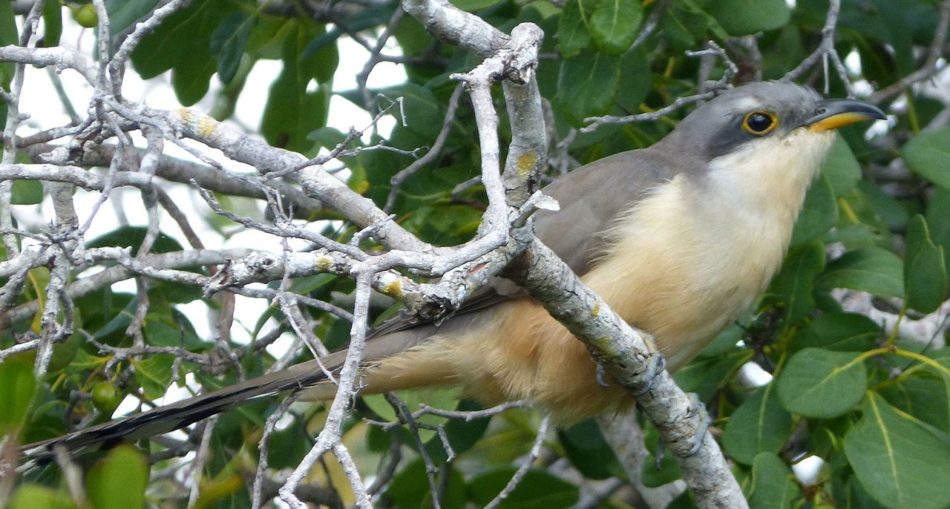Guyana is known for its vast tracts of pristine mangrove forests, which covers a large part of our coast and line many of our rivers. Mangroves protect our shores but also provide habitat for diverse wildlife, especially birds. One interesting species that can be found is the Mangrove Cuckoo (Coccyzus minor) which is often underappreciated.
It is among the twelve (12) species of cuckoos that can be found in Guyana. This bird usually grows but twenty-eight (28) to thirty-four (34) centimetres long and weighs between sixty-four (64) to one hundred two (102) grams. Continue reading to learn about this creature and its uncommon sightings.

The Mangrove Cuckoo Photo Source: Photo By gailhampshire from Cradley, Malvern, U.K – Mangrove Cuckoo . Coccyzus minor, CC BY 2.0, https://commons.wikimedia.org/w/index.php?curid=49853916
Description Of The Mangrove Cuckoo
The Mangrove Cuckoo head and upperparts are brown. As for the eyes, there is a yellow ring around the eye. They have a long tail, brown above and black-and-white below, and a black curved bill with yellow on the lower mandible. This bird is best distinguished by its black facial mask and buffy underparts. As for the feet, the two inner toes point forward and the two outer backwards.
- Male Cuckoos – The male cuckoos are the same as the female, but the male is larger than female, weighing more and having a longer wingspan.
- Female Cuckoos – Female cuckoos have secretive and fast laying behaviours, and are smaller than the male cuckoos.
Scientific Classification Of The Mangrove Cuckoo
- Kingdom: Animalia
- Phylum: Chordata
- Class: Aves
- Order: Cuculiformes
- Family: Cuculidae
- Genus: Coccyzus
- Species: C.minor
Habitat Of The Mangrove Cuckoo
The Mangrove Cuckoo is native to Guyana but can be found in countries like the United States along the southern coasts of Florida, Mexico, and the Caribbean. This cuckoo is found primarily in mangrove swamps and hammocks and would avoid heavily developed areas.
Diet Of The Mangrove Cuckoo
The Mangrove Cuckoo regularly feeds on insects such as crickets, bugs, caterpillars, grasshoppers, mantis, cicadas, beetles, plus spiders. It also consumes snails, lizards, and fruits. These birds also hunt by ambush, remaining motionless and peering from its perch. Then, it grabs the insect and returns to its perch. Finally, these amazing creatures regurgitate pellets with indigestible items.
Behaviour & Lifestyle Of The Mangrove Cuckoo
The Mangrove Cuckoo usually hunts from a roost, observing vegetation. It trails its prey by jumping but it has the abilty to run. These birds can scatter due to hurricanes. This species is demure and taciturn, often concealed among the foliage.
Reproduction Of The Mangrove Cuckoo
The Mangrove Cuckoo habitually nests above two to three metres of water in a mangrove tree or a fork of a tree above ground, with the nest being a flat platform of twigs and leaves. The breeding season differs according to the range. The female typically lays two pale blue eggs, and rarely three. The incubation persists for about nine (9) to eleven (11) days, which is bestowed by both sexes.
Sound Of The Mangrove Cuckoo
You can also recognize a Mangrove Cuckoo by a typical “gawk, gawk, gawk, gawk, gawk, gawk” call. You will also hear a single whit at times. This range of hard, nasal tones accelerates at the end.
Facts About the Mangrove Cuckoo
- When the Mangrove Cuckoos are outside of the breeding season, it is usually silent and consequently becomes almost undetectable.
- Like any other cuckoos, the Mangrove Cuckoo has four toes on each foot in a zygodactyl arrangement. Out of the four toes, two are forward and two behind.
The Mangrove Cuckoo in Guyana
The Mangrove Cuckoos are relatively uncommon and very secretive. Due to them being secretive, they are called skulkers for their habit of staying out of sight moving slowly and seldom through thick vegetation. So, next time you are in a swampy or area with mangroves, check and see if you can spot one of these unique creatures.
Article References
- https://en.wikipedia.org/wiki/Mangrove_cuckoo
- https://www.allaboutbirds.org/guide/Mangrove_Cuckoo/overview
- http://www.oiseaux-birds.com/card-mangrove-cuckoo.html







